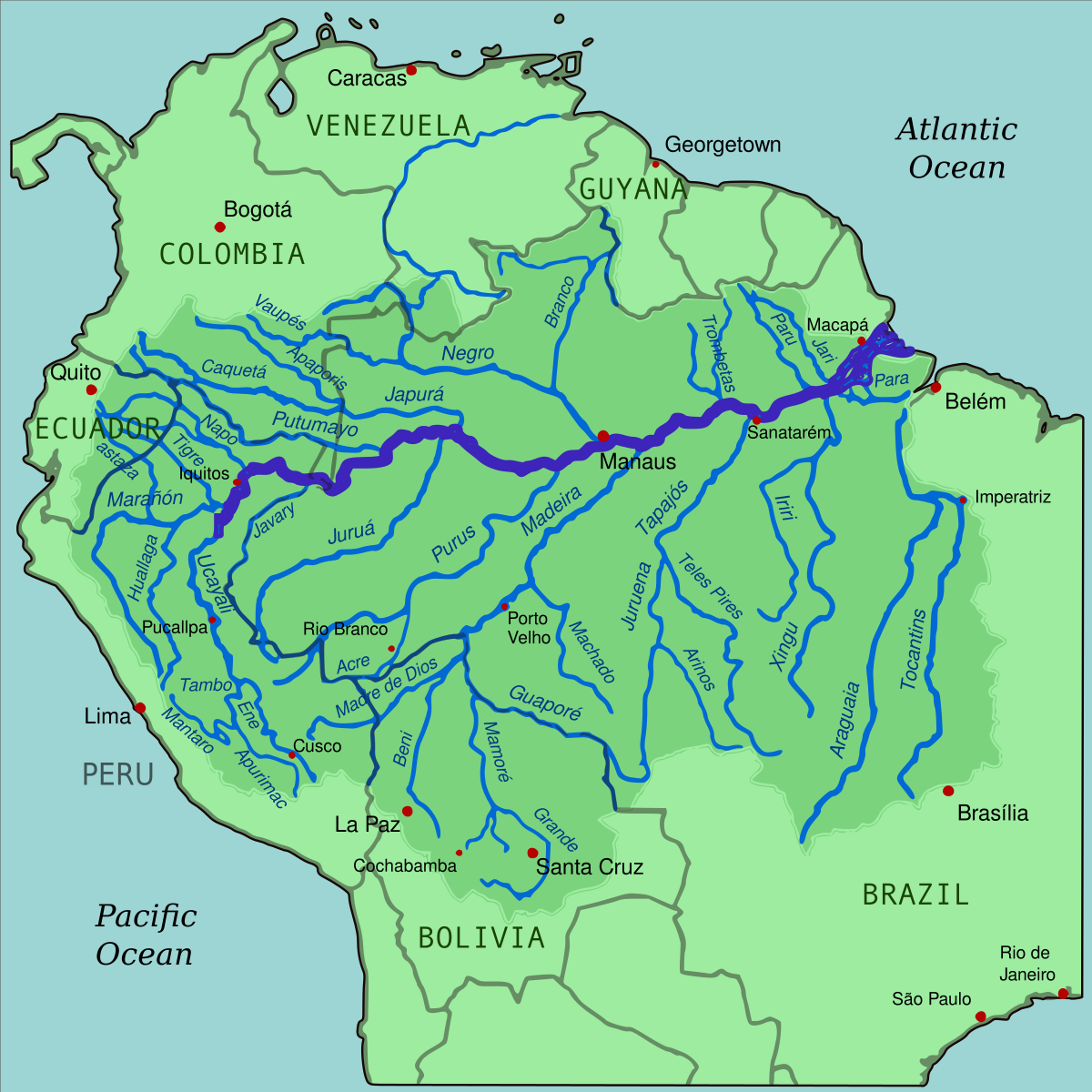 |
| Amazonia -Amazon River and the drainage basin : courtesy Wikipedia |
This sums up the state of almost all the major rivers on Earth. Globally, dams, small and big are being built as a part of developmental agenda. However environmentalists have serious reservations. While developers assert with solid numbers in terms of quantity of water saved, areas of farmland irrigated and gigawatts of electricity generated, environmentalists are often at a disadvantage because they don't have numbers to support their arguments. But it is indeed true that dam building exercises expose river basins and the associated ecosystem to irreversible alterations which are often irreparable and or irremediable.
In a recent issue of Nature Latrubesse and his team ask and answer the crucial question: Can we quantify the effects of dams on the ecosystem? They focused on the Amazon basin, its floodplains, estuaries and the whole diverse ecosystem sustained by the mighty Amazon and its tributaries. Amazonia, with its amazing biodiversity is an invaluable ecological marvel which influences terrestrial climate. Evolved over millions of years of geological history, Amazonian ecosystem is critical to the well being of mother Earth. A total of 428 hydel projects (of which roughly 140 are completed or in advanced stages of construction) are planned along the rivers. This means encroaching into Amazonina forests and eating into the pristine forest areas referred to as Intact Forest Landscapes(IFLs). Hence it has become imperative that we assess the impact of dams on the Amazonian ecosystem but conduct similar studies on all other major rivers. Taking into consideration a multiplicity of short term and long term effects Latrubusse and team calculate Dam Environmental Vulnerability Index , abbreviated as DEVI to quantitatively assess the impact of dams, both existing and proposed on the environment. DEVI is a composite parameter which includes Basin integrity Index, (BII), Fluvial Dynamics Index (FDI) and DII (Dam impact Index). What do each of these indices stand for? The team provides the following definitions:
BII: Basin Integrity Index : quantifies the vulnerability of the river basin to existing and potential changes in land use , potential erosion and runoff pollution;
FDI : Fluvial Dynamics Index :Gauges the influence of he fluxes of sediment transported by the rivers, the morphodynamic activity of the rivers, stage -range of the flood pulse;
DII: Dam Impact Index: quantifies how much of the river system will be affected by the planned and built dams.
Latrubusse and coworkers feel that often the benefits of the mega hydel projects are exaggerated and the cost of environmental vulnerability undermined. They and other likeminded scientists caution that indiscriminate dam building projects could spell recipe for sure disaster.
TAILPIECE
Alas! The river has already been marginalised. Web search for Amazon tosses up links for the online shopping giant, rather than for the river.
References
1. Damming the rivers of Amazon basin Latrubusse et al Nature 15 June 2017, Vol.546, pages 363-369
3. Dams on the Amazon river could have widespread devastating impacts and we keep building more of them by Pierre-Louis Popular Science , June 2017
4. The Amazon basin in transition Davidson et al Nature 19 January 2012, vol. 481, pages 321-328
5. Balancing hydropower and biodiversity in the Amazon, Congo and Mekong Windmill et al Science 8 January 2016, 128-129